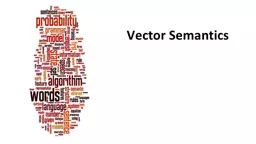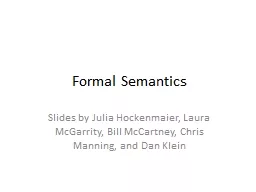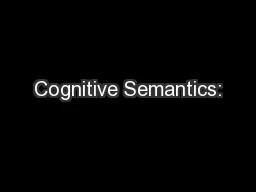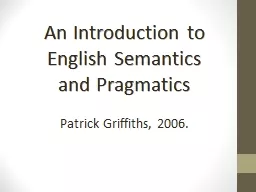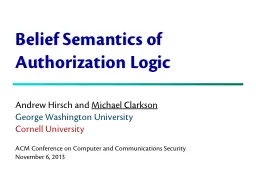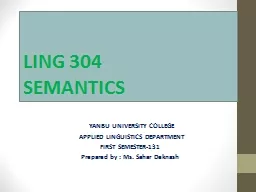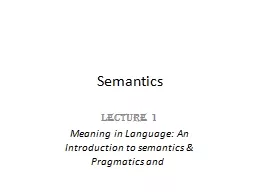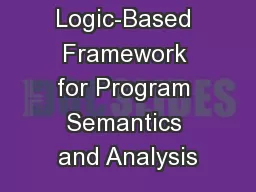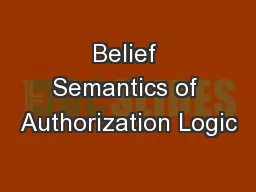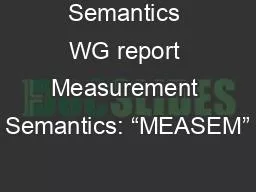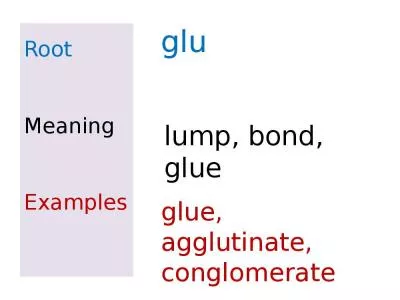PPT-Vector Semantics Why vector models of meaning?
Author : tatyana-admore | Published Date : 2019-03-19
computing the similarity between words fast is similar to rapid tall is similar to height Question answering Q How tall is Mt Everest Candidate A The
Presentation Embed Code
Download Presentation
Download Presentation The PPT/PDF document "Vector Semantics Why vector models of me..." is the property of its rightful owner. Permission is granted to download and print the materials on this website for personal, non-commercial use only, and to display it on your personal computer provided you do not modify the materials and that you retain all copyright notices contained in the materials. By downloading content from our website, you accept the terms of this agreement.
Vector Semantics Why vector models of meaning?: Transcript
Download Rules Of Document
"Vector Semantics Why vector models of meaning?"The content belongs to its owner. You may download and print it for personal use, without modification, and keep all copyright notices. By downloading, you agree to these terms.
Related Documents

